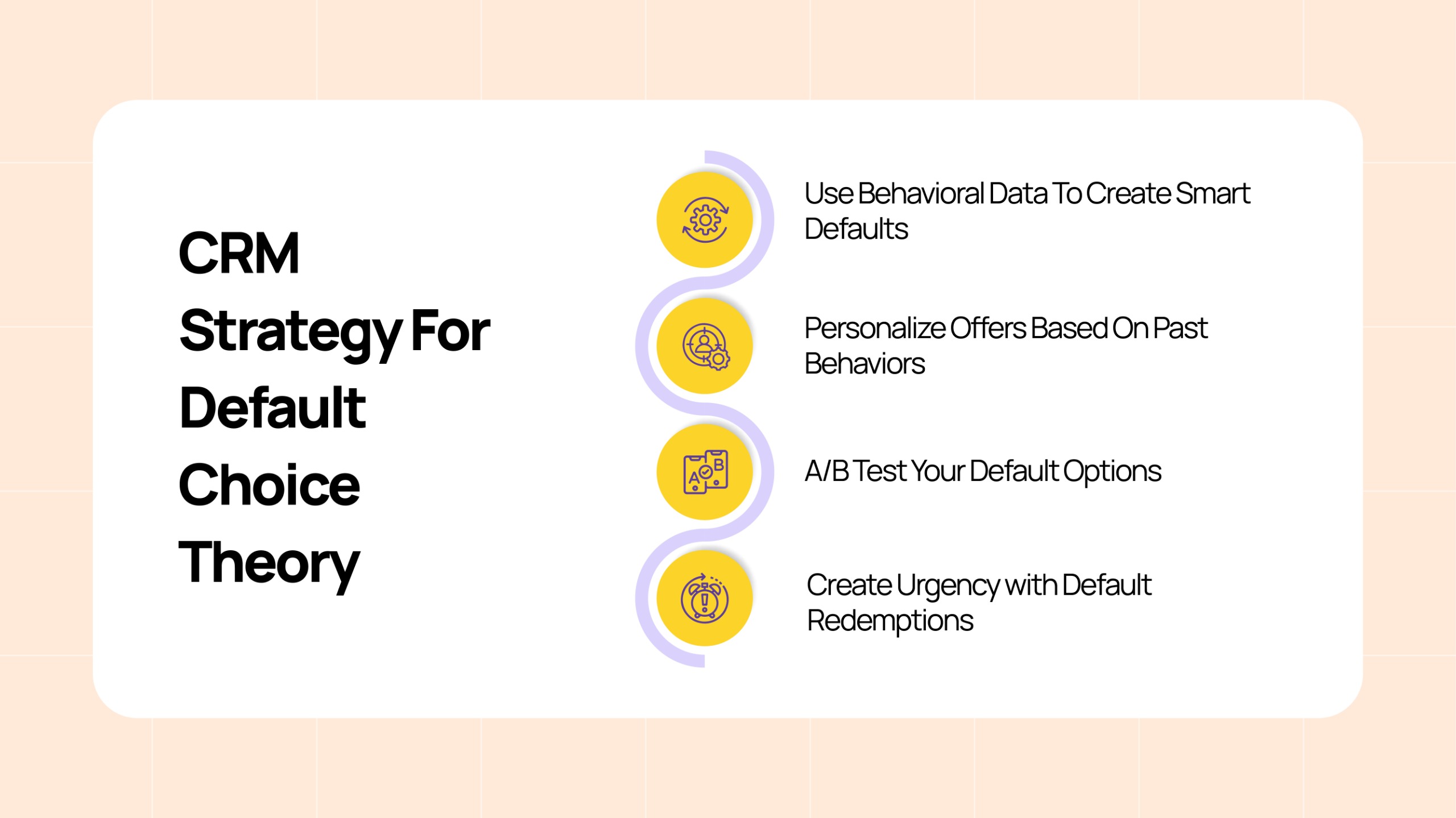
What if you could increase customer engagement simply by changing how you present your offers?
Imagine if your customers were “nudged” to opt into your best deals without any aggressive marketing, just subtle shifts in their decision-making environment. This is the genius behind Default Choice Theory or Default Option Theory, a concept rooted in Nudge Theory that can revolutionize how you design offers, optimize opt-ins, and boost redemptions.
In this blog, we’ll break down how you can apply Default Choice Theory principles to influence opt-ins and redemptions in your business.
What is Default Choice Theory?
Default Choice Theory comes from Nudge Theory, and it’s based on a simple yet powerful insight: people are more likely to go with the option that’s set as the default. In other words, when we’re presented with several choices, we tend to stick with the one that’s already selected for us because it feels easier and requires less thought.
Take, for example, signing up for a service or a newsletter. Often, the box to opt in is already checked by default. Because of this, many people end up subscribing without actively deciding to do so. This happens because our brains are wired to avoid effort and prefer things to stay the same (a behavior known as the status quo bias). We tend to choose the path of least resistance, and if an option is already set for us, it feels easier to just go along with it.
So, businesses can tap into this natural behavior by setting up defaults that align with the actions they want customers to take, like opting into a newsletter or joining a loyalty program, without needing to push them too hard.
The Origin of Default Choice Theory
The Nudge Theory was popularized by Richard Thaler and Cass Sunstein in their book Nudge: Improving Decisions About Health, Wealth, and Happiness. The theory is built on the idea that small, subtle changes in how choices are presented can have a significant impact on people’s behavior, without forcing them to do anything. This concept can be applied to everything from retirement savings to user engagement in digital platforms.

Nudge Theory can be broken down into three core principles:
- Libertarian Paternalism: This means influencing people’s choices without limiting their freedom. The goal is to help people make better decisions while still allowing them to choose.
- Choice Architecture: The way options are presented significantly impacts decision-making. By designing the environment where decisions are made, you can subtly steer people toward beneficial choices.
- Default Settings: People tend to stick with the default option, which is why setting desirable outcomes as the default can increase opt-ins and redemptions.
How Default Choice Theory Impacts UX + Offers
The Default Choice Theory, when combined with effective UX design and offers, can significantly enhance user engagement and conversions. By applying these principles, businesses can design user-friendly environments that naturally guide customers toward making the best choices for both themselves and the brand.
Influencing Opt-Ins
Opt-ins are important for driving customer engagement, especially for offers like email subscriptions, loyalty programs, or even promotional offers. By setting up default opt-ins, you can increase participation rates without having to rely on intrusive pop-ups or aggressive messaging.
CRM Angle: Use CRM systems to analyze which offers are most appealing to your audience. Then, use behavioral data to create smart defaults for each customer segment. For example, if a customer has interacted with a specific product category, set the default offer to opt into promotions related to that category.

Real-Life Example: Amazon’s 1-Click Ordering is a prime example of default choices in action. By making the purchase process as seamless as possible, they’ve created a default option that users are highly likely to stick with, resulting in increased sales and customer retention.
Influencing Redemptions
Redemption rates are a key metric for determining how well your offers are converting into actual customer actions. By setting up default redemptions, businesses can significantly increase how often customers claim their rewards or benefits.
CRM Angle: Track past redemption behaviors and use this data to personalize default offers. If a customer regularly redeems a specific type of discount, automatically present that discount as the default when they visit your site. This keeps the user journey smooth and encourages action.

Real-Life Example: Sephora’s Beauty Insider program is a perfect example. They use default settings to automatically apply loyalty rewards or discounts at checkout for members. This seamless experience has driven maximum revenue from repeat buyers.
CRM Strategy For Default Choice Theory
Default Choice Theory is not just about setting defaults; it’s about using your CRM to create a personalized, seamless experience that encourages positive decision-making throughout the customer journey. Here’s how you can implement this strategy:

- Use Behavioral Data To Create Smart Defaults
Make use of your CRM data to understand customer preferences and behaviors. For example, if a customer frequently opts for a particular product, set it as their default recommendation.
Example: Use Mailchimp or HubSpot to set up auto-opt-ins based on customers’ browsing or purchase history.
- Personalize Offers Based On Past Behaviors
If a customer frequently redeems a discount on a specific product category, automatically apply that discount to their next purchase. Personalization at this level not only increases redemption rates but also makes customers feel valued.
Example: Starbucks uses default redemptions for loyalty points at checkout. If a customer has accumulated points, they automatically get applied, resulting in increased engagement and redemption.
- A/B Test Your Default Options
Test different default options (like pre-checked boxes for email subscriptions or default shipping methods) to determine which ones result in higher engagement. Use your CRM’s reporting features to analyze which default settings yield the best results for opt-ins or redemptions.
Example: Spotify tests multiple subscription defaults and sees which ones convert the most users into paying subscribers.
- Create Urgency with Default Redemptions
When setting up redemptions, create urgency by making default options time-sensitive. For instance, auto-apply points that expire within 30 days and show them as part of the default checkout flow.
Example: Hotels.com automatically applies reward credits that are close to expiration during checkout, prompting customers to redeem them.
How to Apply Default Choice Theory Today
You can apply Default Choice Theory to influence opt-ins and redemptions by following the strategies mentioned below:

- Audit Your Opt-In Forms – Review your current forms to see if you’re pre-checking the opt-in boxes for email subscriptions, offers, or loyalty programs.
- Review Checkout Flows – Look for opportunities to pre-select upsells or loyalty points redemptions at checkout to make it easier for customers to follow through on their desired actions.
- Check Loyalty Programs – Ensure that loyalty points are automatically redeemed when customers reach a certain threshold.
- Test Default Messaging – Test the effectiveness of default messaging like “Recommended” vs “Most Popular” to see which one encourages more action.
Conclusion
By adopting strategies from the Default Choice Theory, you’ll create an environment where customers are gently nudged toward making the best decisions for them, and for your brand.
Ready to boost your conversions and customer engagement with subtle nudges? Start implementing Default Choice Theory in your CRM and watch your offers and redemption rate improve.
